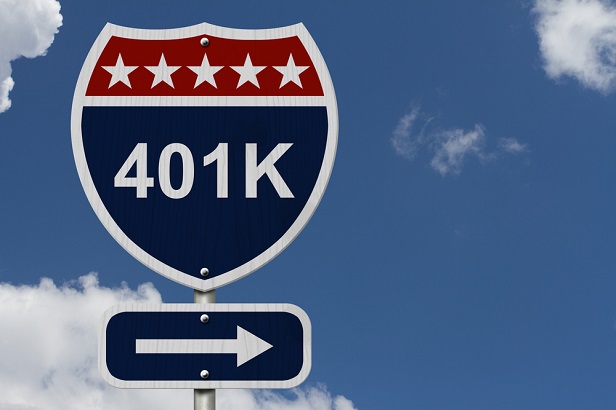 More than a quarter of workers havealready withdrawn money from retirement accounts to pay forsomething other than retirement. And another 42 percent anticipatethey will have to do so, according to PwC. (Photo:Shutterstock)
More than a quarter of workers havealready withdrawn money from retirement accounts to pay forsomething other than retirement. And another 42 percent anticipatethey will have to do so, according to PwC. (Photo:Shutterstock)
Fear can be a tremendous motivator, says Kent Allison.
|But anxiety over financial concerns can also be crippling,forcing workers into a stasis that is compounding poor financialdecisions for many.
|Allison, a partner at PwC, has been called the “godfather” offinancial wellness, and in a way can be thought of as one of thecountry's pioneering shrinks to workers when it comes toanalyzing the impact of personal finances on their lives.
|“Anxiety can be paralyzing,” said Allison, who heads PwC'sfinancial wellness practice.
|Nearly half of the employee respondents in PwC's 2018Employee Financial Wellness Survey claim to be stressed overtheir finances.
|That's down a bit from last year's survey, thanks in part torising wages and stock markets, says Allison. But it's still high.What's more, workers said financial worries were by far thegreatest source of stress in their lives—far more than job securityfears, health issues, or even relationships in their personallives.
|All of the attention given to retirement preparedness by thefinancial services industry, politicians, regulators and the mediain recent years has obscured the real reason behind workersfinancial anxiety, says Allison.
|For the seventh straight year, PwC's survey has shown that thefear of not having cash to cover near-term unexpected expenses faroutweighs the fear of not having enough savings for retirement,particularly for Gen X and Millennial workers.
|“There's been a lot of focus on saving for retirement, but theissue of workers' stress is more fundamental to near-termexpenses,” said Allison.
|Proof of that is found in the high level of loans from 401(k)plans, and what those loans are used for. “They are not withdrawingmoney for houses and other expenses. They are withdrawing money tocover immediate unexpected expenses.”
|More than a quarter of workers have already withdrawn money fromretirement accounts to pay for something other than retirement. Andanother 42 percent anticipate they will have to do so, according toPwC.
|Millennials are withdrawing at the highest clip—33 percent.Dealing with unexpected expenses is cited as the most common reasonfor the early withdrawals across generations. For instance, 55percent of withdrawals from retirement plans by Gen Xers went tocover an unexpected expense, compared to 3 percent that said theyused the assets to buy a home.
|For boomers, 45 percent used withdrawals to pay for unexpectedexpenses, compared to 31 percent that used the money to covermedical expenses.
|Analysis paralysis in workplace benefits?
On balance, workers claim to have a good understanding of thesavings and benefits programs their employers are offering, and howthose benefits impact their financial well-being.
|But there may be some cognitive dissonance in that data. Allisoncited the wider adoption of health savings accounts as potentialevidence that workers are overwhelmed managing benefits options.Less than half of workers that are offered an HSA contribute toone. And when they do, most aren't using the vehicles to fundlong-term out-of-pocket medical expenses.
|Between managing retirement savings accounts, adjusting healthplans, and the wide array of other options on benefit platforms,workers may be suffering from analysis paralysis when it comes toguiding their financial lives.
|“It is a bit of a deer-in-the-headlight situation,” saidAllison. “Are employees capable of handling all of these decisions?With all of the choices employees have to make, we have a highmountain to climb.”
|Even with best retirement plan design, some workers need morehelp
|The evolution from defined benefit retirement plans to definedcontribution plans happened “almost overnight,” says Allison.
|“On retirement, we've pushed the onus on to the individual,” hesaid.
|Organizations, and even the government, are realizing thesituation workers have been put in. Regulations facilitatingautomatic enrollment and target date funds, and employers moving tomore streamlined investment menus in 401(k) plans, have beenvaluable innovations, said Allison.
|More innovations intended to simplify employees' options arecoming, he says, noting the push on Capitol Hill to introducelifetime income options in 401(k) plans.
|Further simplification would be welcomed. But Allison doesn'tthink it will be enough.
|“Retirement plan design is a good thing, but it isn't enough.While we've tried to use plan design to address saving shortfalls,we haven't asked why people were not saving in the first place.Down the road, as we continue to introduce more innovations, therehas to be some recognition that many workers won't be capable ofmanaging the options, and will need help,” said Allison.
|Changing concept of retirement
Some of the numbers on retirement savings in PwC's report areheartening.
|Nearly half of surveyed employees have increased savings ratesover last year—only 12 percent said they are saving less. Overall,73 percent of workers said they are saving for retirement.
|One quarter of boomers said they have more than $500,000 saved.And 42 percent have at least $200,000 saved.
|Still, 32 percent of boomers have less than $50,000 saved. And43 percent have less than $100,000 stashed for retirement.
|“Mathematically, the savings numbers are not where they need tobe. That's a considerable concern,” said Allison.
|Longevity is the largest retirement implication for workers,their employers, and even the government. Workers must make savingslast longer, employers must manage longevity risk when they dooffer defined benefits, and the share that Social Security coversof retirement costs will decrease as people live longer.
|Those factors are conspiring to redefine what the wordretirement means, thinks Allison.
|“I firmly believe the concept of retirement will change,” hesaid. “The reality is that retirement isn't going to continue to bethis cut off age where people stop working. The retirement periodis simply becoming too long.”
|Retirement, for much of the workforce, will evolve to become atransition–not from working to not working, but from leaving acareer job for other means of income, said Allison.
|“People are going to have to continue to work,” he added.
Complete your profile to continue reading and get FREE access to BenefitsPRO, part of your ALM digital membership.
Your access to unlimited BenefitsPRO content isn’t changing.
Once you are an ALM digital member, you’ll receive:
- Critical BenefitsPRO information including cutting edge post-reform success strategies, access to educational webcasts and videos, resources from industry leaders, and informative Newsletters.
- Exclusive discounts on ALM, BenefitsPRO magazine and BenefitsPRO.com events
- Access to other award-winning ALM websites including ThinkAdvisor.com and Law.com
Already have an account? Sign In






